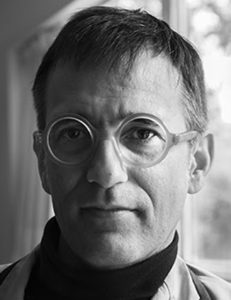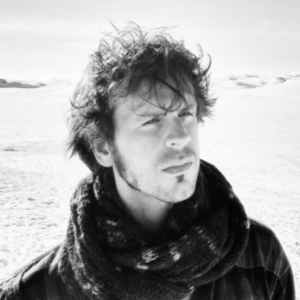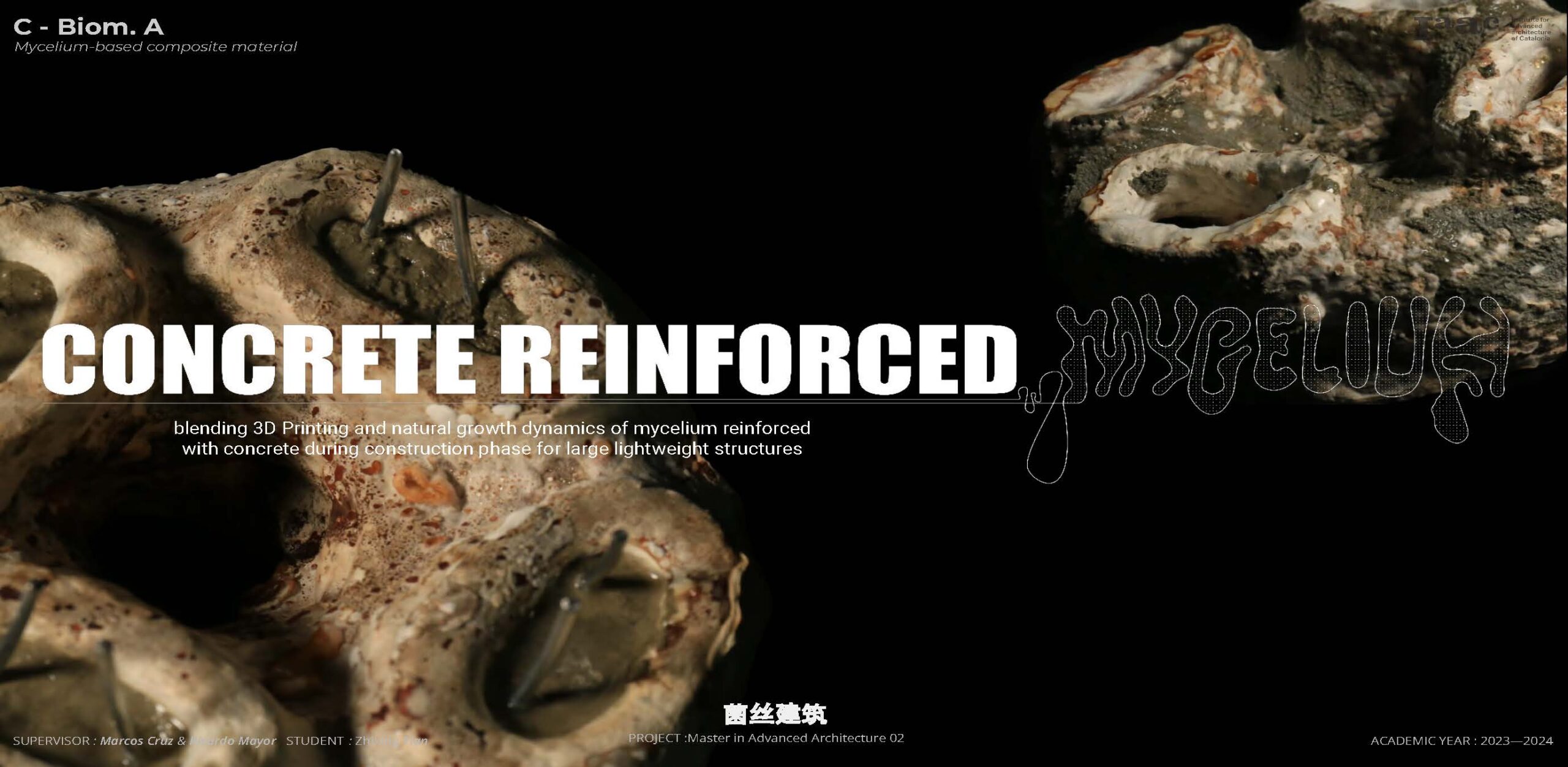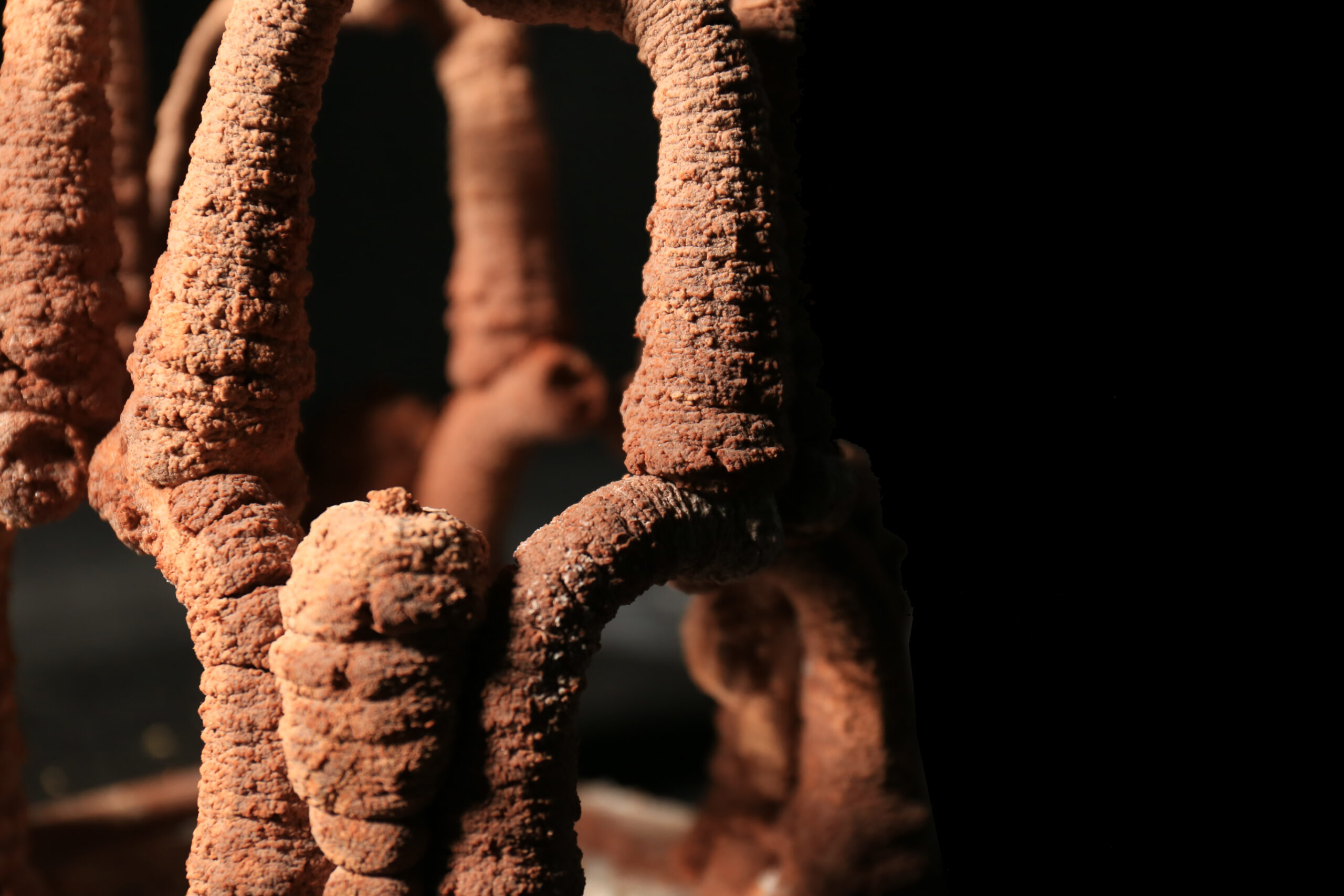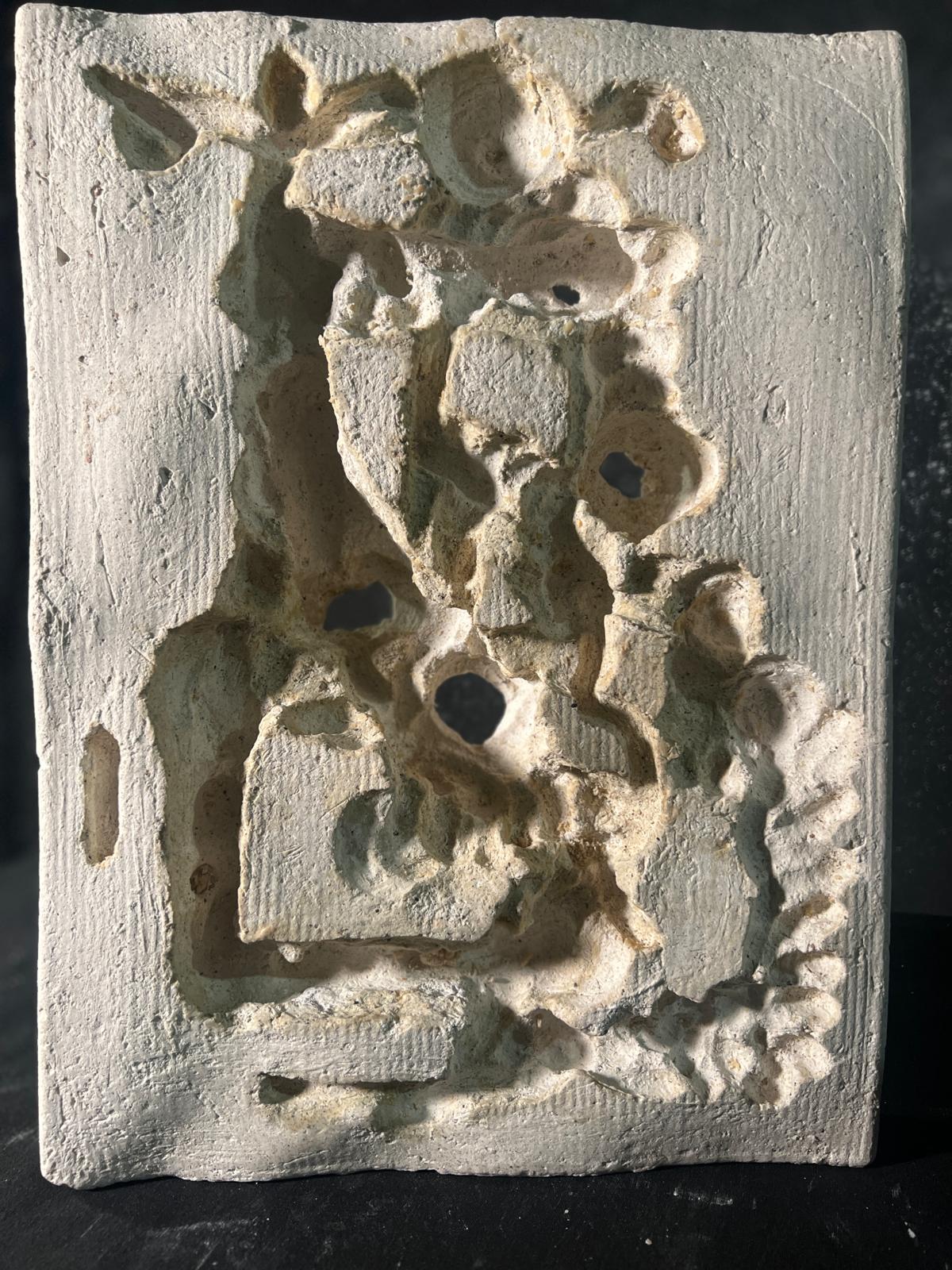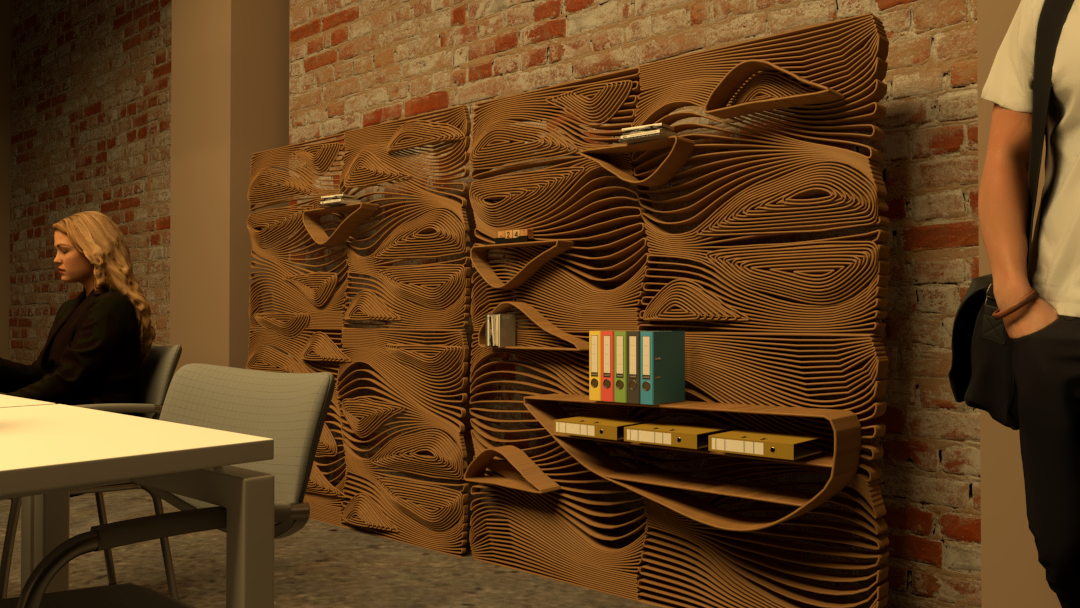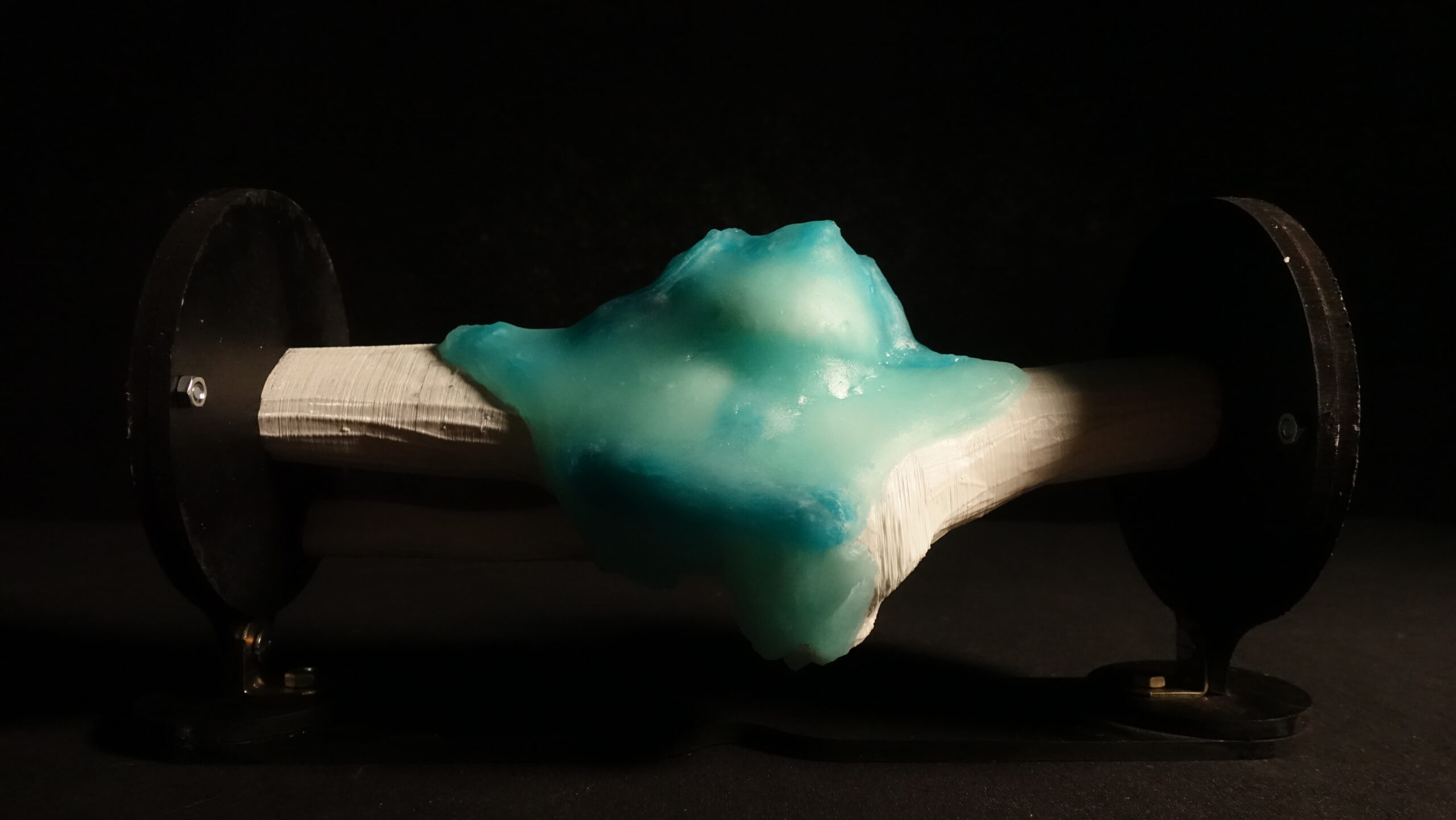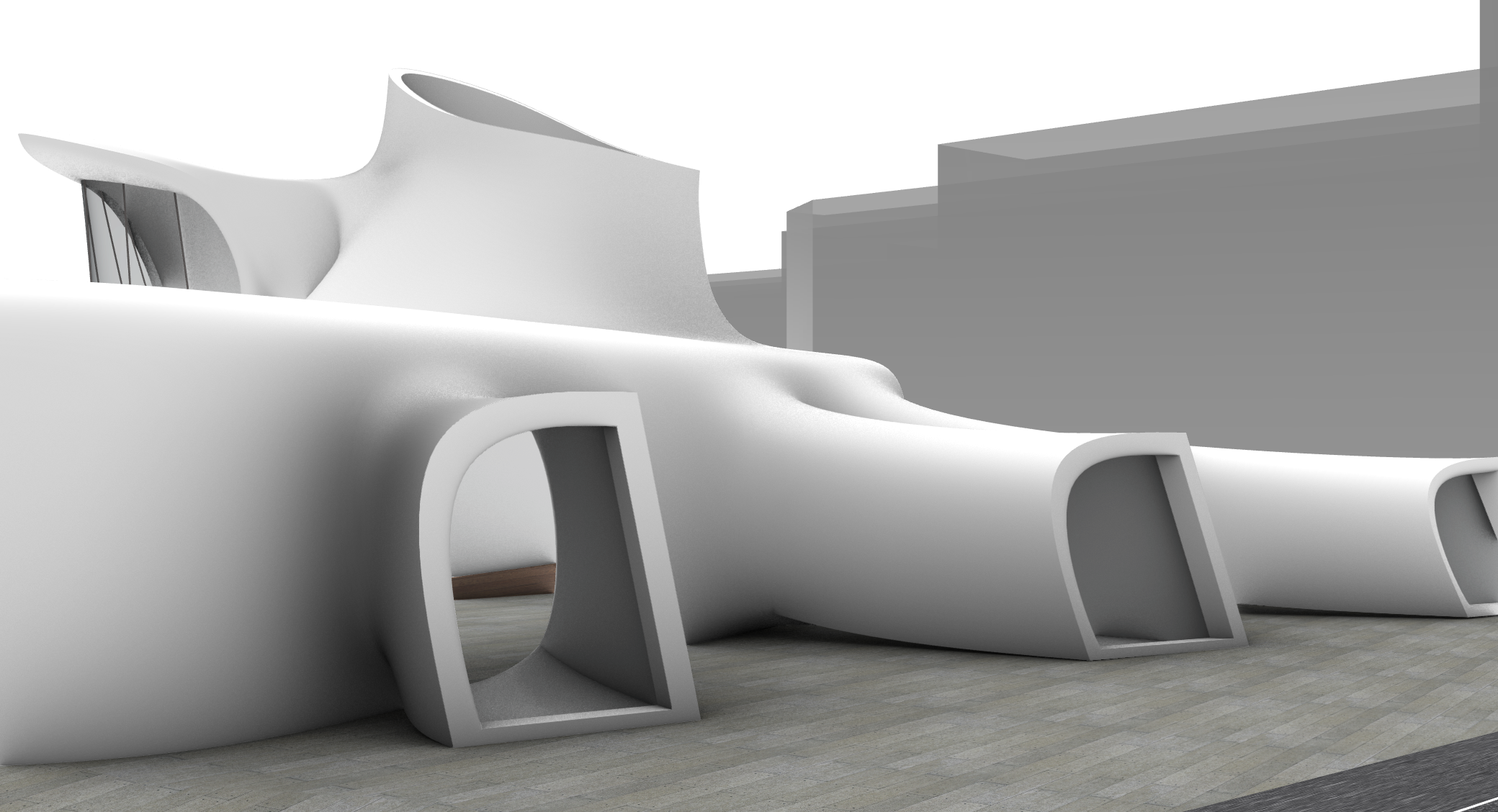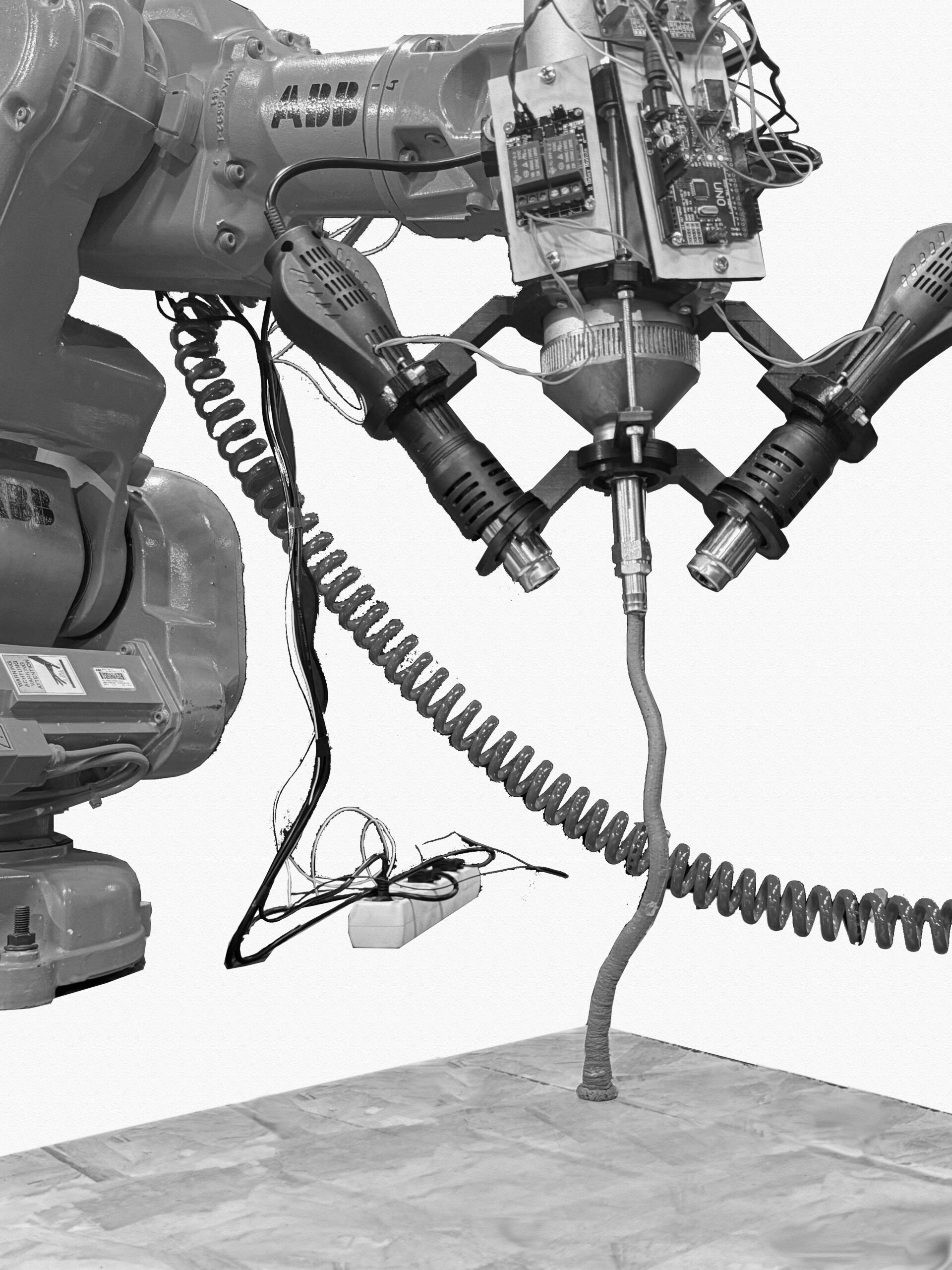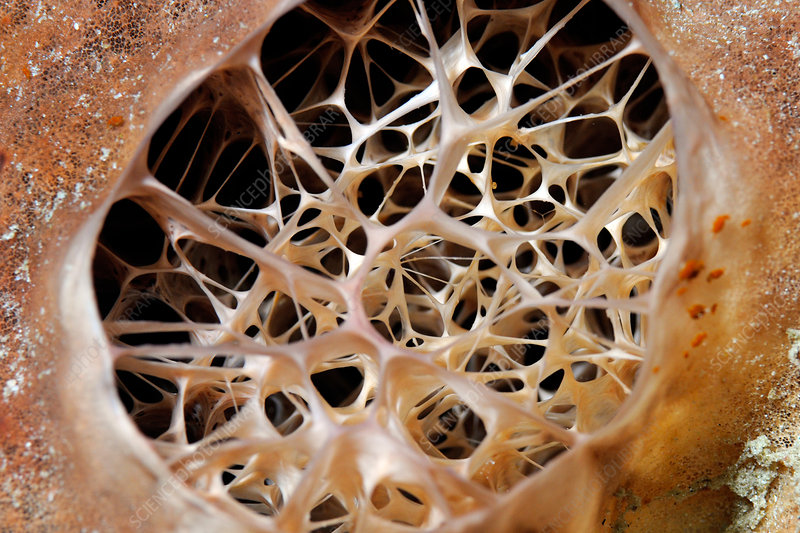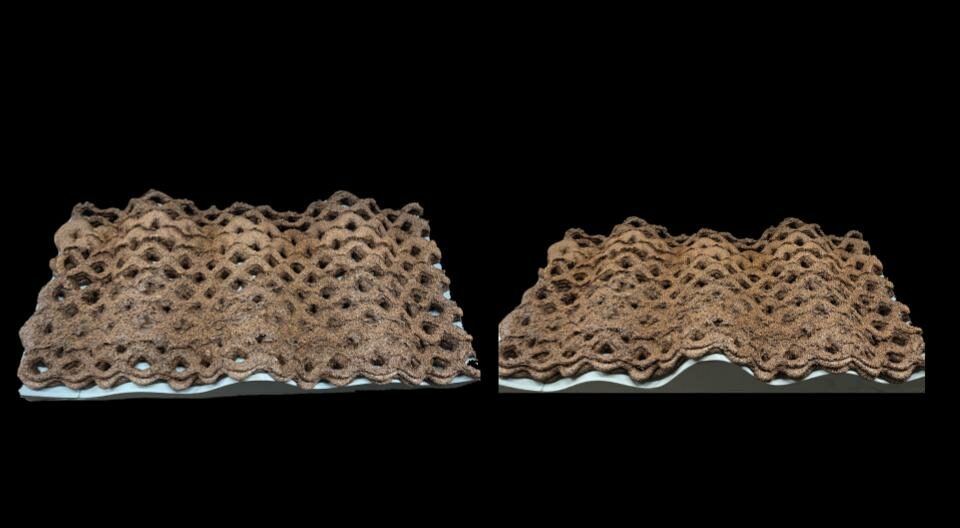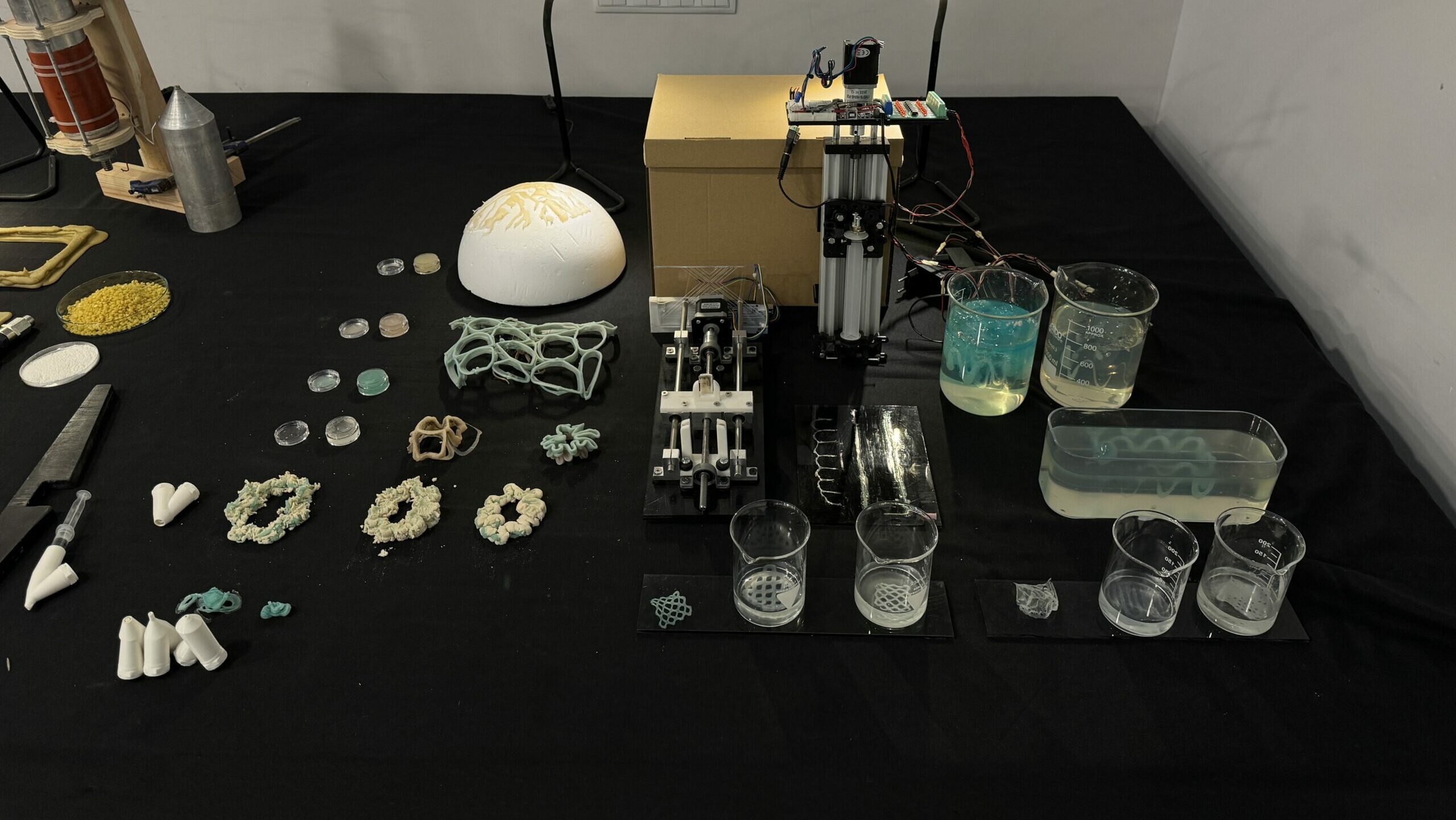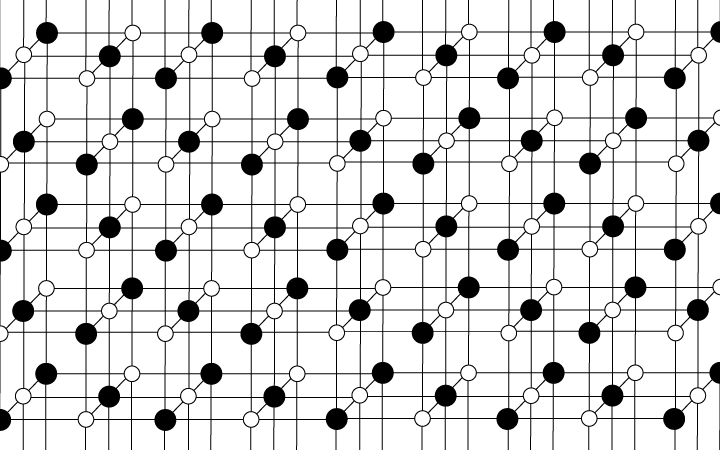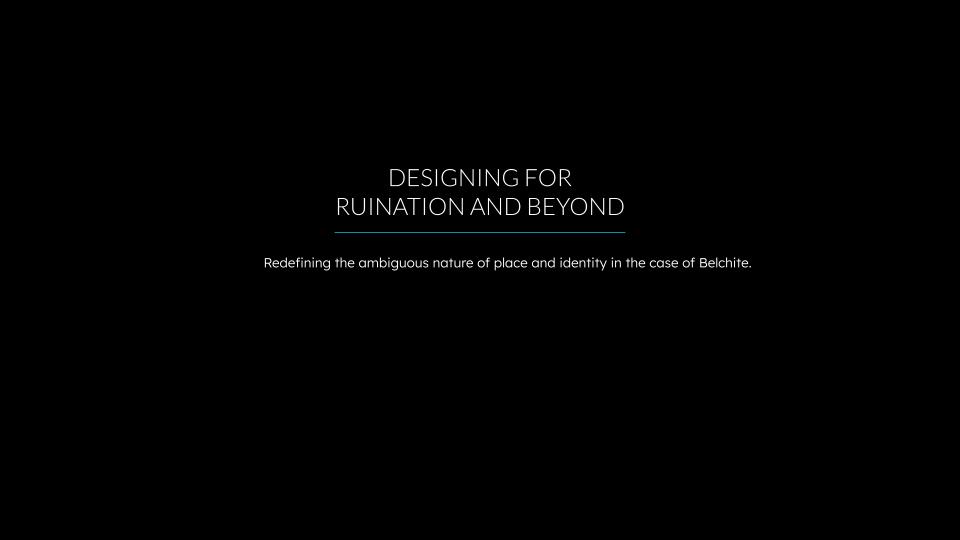
Photo Credit: PLEATS OF MATTER: Additive Manufacturing of Seaweed bioplastic by Elena Petruzzi, C-Biom.A Thesis Studio MAA02 21/22
Intro Description
C-Biom.A is an innovative research group at IAAC focused on the development of new bio and environmentally integrated design strategies.
Students explore advanced computational simulations and models applied to prototyping made from new composite materials that are bio-inspired or bio-integrated. Many of the proposed objects and components aim to explore new fabrication methods, analyze natural-based systems, and integrate them into buildings.
In an era where more and more people live in cities, the ultimate goal of the group is to develop a radically new sensitivity in understanding architecture, where climate and nature, as well as a new sense of materiality, drive the design.

Photo Credit: [Auto]clay : bio-receptive, robotic adobe construction in earth, Laukik Lad, C-Biom.A Thesis Studio MAA02 21/22
Structure
This course will be structured into 3 units :
1st term
- Introduction to natural-based systems and materials
- Implementation and drawings of natural structures
- Research of state of the art technologies and materials
- Development of advanced fabrication methods
- Preliminary architectural proposal
2nd term
- Fabrication prototypes
- Analysis and results of fabrication prototypes
- Development of natural systems and their application in an architectural context
- Presentation of a segment of the proposed building design
3th term
- Fabrication of a bigger prototype as a component of a proposed building design
- Short film to document the full design and fabrication development, including final drawings and prototypes
Thesaurus
Scaffold
Scaffolds represent important components for tissue engineering. Scaffolds, typically made of polymeric biomaterials, provide the structural support for cell attachment and subsequent tissue development.
Literature: Chan BP, Leong KW. Scaffolding in tissue engineering: general approaches and tissue-specific considerations. Eur Spine J. 2008 Dec;17 Suppl 4(Suppl 4):467-79. doi: 10.1007/s00586-008-0745-3. Epub 2008 Nov 13. PMID: 19005702; PMCID: PMC2587658.
Substrate
[From substratum.]
In biology, a substrate can be the surface on which an organism (eg: plant, fungus, or animal) lives or the substance on which an enzyme can act. In geology, a substrate is a rock or sediment surface where chemical and biological processes occur.
Literature: Annelies Janssen – van Drunen. Stahl blog. August 17, 2020.
Porous
(of a rock or other material) having minute interstices through which liquid or air may pass.
“layers of porous limestones”
A porous material can be defined simply as any solid containing void space(s), i.e., space not occupied by the main framework of atoms that make up the structure of the solid.
Literature: Novel Materials for Carbon Dioxide Mitigation Technology, 2015
Multifunctional
performing or capable of performing more than one function,
Multifunctional materials are materials that perform multiple functions in a system due to their specific properties. Multifunctional materials can be both naturally existing and specially engineered.
Literature: Nemat-Nasser, S., et al., Multifunctional Materials, Figure 12.2. in Biomimetics: Biologically Inspired Technologies, Bar-Cohen, Y., Ed., CRC Press, 2005. (This book is available online through the Penn State Library system.)
Multilayered
having or involving several or many layers.
Consider a multilayered material whose unit cell consists of two layers: the first layer (80% volume fraction) is made by ceramic SiC, behaving elastically, while the second (20% volume fraction) is made by steel 316, behaving as viscoplastic material.
Literature: Thermomechanical Behavior of Dissipative Composite Materials, 2017
Bioresponsive
The term bioresponsive means to generate a biological response upon stimulation by the surrounding environment. The bioresponsive hydrogels are designed to have a conversation with the surrounding biological environment and respond according to its stimulus.
Literature: C.K. Sudhakar, Sanjay Jain et al,Hydrogels—Promising Candidates for Tissue Engineering, in Nanotechnology Applications for Tissue Engineering, 2015
Bioresponsive materials can be integrated with formulations, scaffolds or devices to act differently towards biological triggers. Most of these materials can be described as ‘transformable’ because they are often capable of morphology changes upon exposure to environmental stimuli.
Literature: Bioresponsive materials, Yue Lu, Alex A. Aimetti, Robert Langer & Zhen Gu
Changeability
If something is changeable, it has the property of being able to change its shape. The suffix ‹-able› indicates that there is a possibility for transformation. But it remains open when and where the transformation takes place. The crucial questions are why change will take place and what will come of it. In arriving at a final state, several stages of transformation may be traversed, or the changeable may be in constant motion or change. When it comes to the point of transformation, existing certainties break up and something new arises. The change of shape can lead to a shape that suits the circumstances better than the original (as in Ovid’s Metamorphoses). Beck describes our world as being in a phase of metamorphosis that results in an ‹epoch-making change in worldviews› and that ‹sets in motion hitherto unshakable certainties. They metamorphose and transform. […] through which we launch into something that obeys a completely different logic. We become part of a world that is fundamentally different from what we believe and expect.›
Literature: Ulrich Beck, Die Metamorphose der Welt, Frankfurt a. M. 2017;
Ovid, Metamorphosen, Publius Ovidius Naso (ca. v43-18), übers. von Michael von Albrecht, München 1998
Stressed
In 1940, Robert Le Ricolais endeavors to introduce the building industry to the concept of light weight stressed skin structures, similar to those used in the fuselage and wings of aircraft. Thus, he explored the form of radiolarian, a marine microscopic organism, which has a spherical, cellular silicious skeleton core, and radiating spicules that join to a membrane. Le Ricolais notes the separation of structural zones into an external membrane in tension and a compressed core, which is composed of three directional, spatial triangular and hexagonal nets and their concomitant polyhedra[*]. He emphasizes the separation of tension from compression zones and the advantage of three directional space nets over two directional, orthogonal nets.
Literature: ‘Essais sur des Systemes reticules a 3 dimensions’ Annales des Ponts et Chausses, 1940.
Tentacular
The word tentacle comes from the Latin tentare and means to try and irritate. In zoology, tentacles refer to the tentacles of cnidarians (jellyfish) or cephalopods (octopuses). Donna Haraway uses the term tentacular thinking as a counter-term and critique of a visually dominated, anthropomorphic form of thinking. The world, on the other hand, is to be perceived by touching, feeling and trying things out. The tentacles stand for the other, the non-human and implicitly pose the question of how a perception that is not two-armed, two-eyed, two-eared and one-brained, but many-armed and many-brained can generate other forms of knowledge.
Literature:Donna Haraway, Staying with the Trouble: Making Kin in the Chthulucene, Durham, London, 2016
String Figures(SF)
Playing games of string figures is about giving and receiving patterns, dropping threads and failing but sometimes finding something that works, something consequential and maybe even beautiful, that wasn’t there before, of relaying connections that matter, of telling stories in hand upon hand, digit upon digit, attachment site upon attachment site, to craft conditions for finite flourishing on terra, on earth. String figures require holding still in order to receive and pass on. String figures can be played by many, on all sorts of limbs, as long as the rhythm of accepting and giving is sustained.
Literature:Donna Haraway, Staying with the Trouble: Making Kin in the Chthulucene, Durham, London, 2016. p.10
Sympoietic
“Critters interpenetrate one another, loop around and through one another, eat each another, get indigestion, and partially digest and partially assimilate one another, and thereby establish sympoietic arrangements that are otherwise known as cells, organisms, and ecological assemblages. Donna Haraway uses holobiont word to mean sympoietic arrangements, at whatever scale of space or time, which are more like knots of diverse intra-active relatings in dynamic complex systems, than like the entities of biology made up of preexisting bounded units(genes, cells, organisms, etc) in interactions that can only be conceived as a competitive or cooperative.
Literature:Donna Haraway, Staying with the Trouble: Making Kin in the Chthulucene, Durham, London, 2016. p.60



